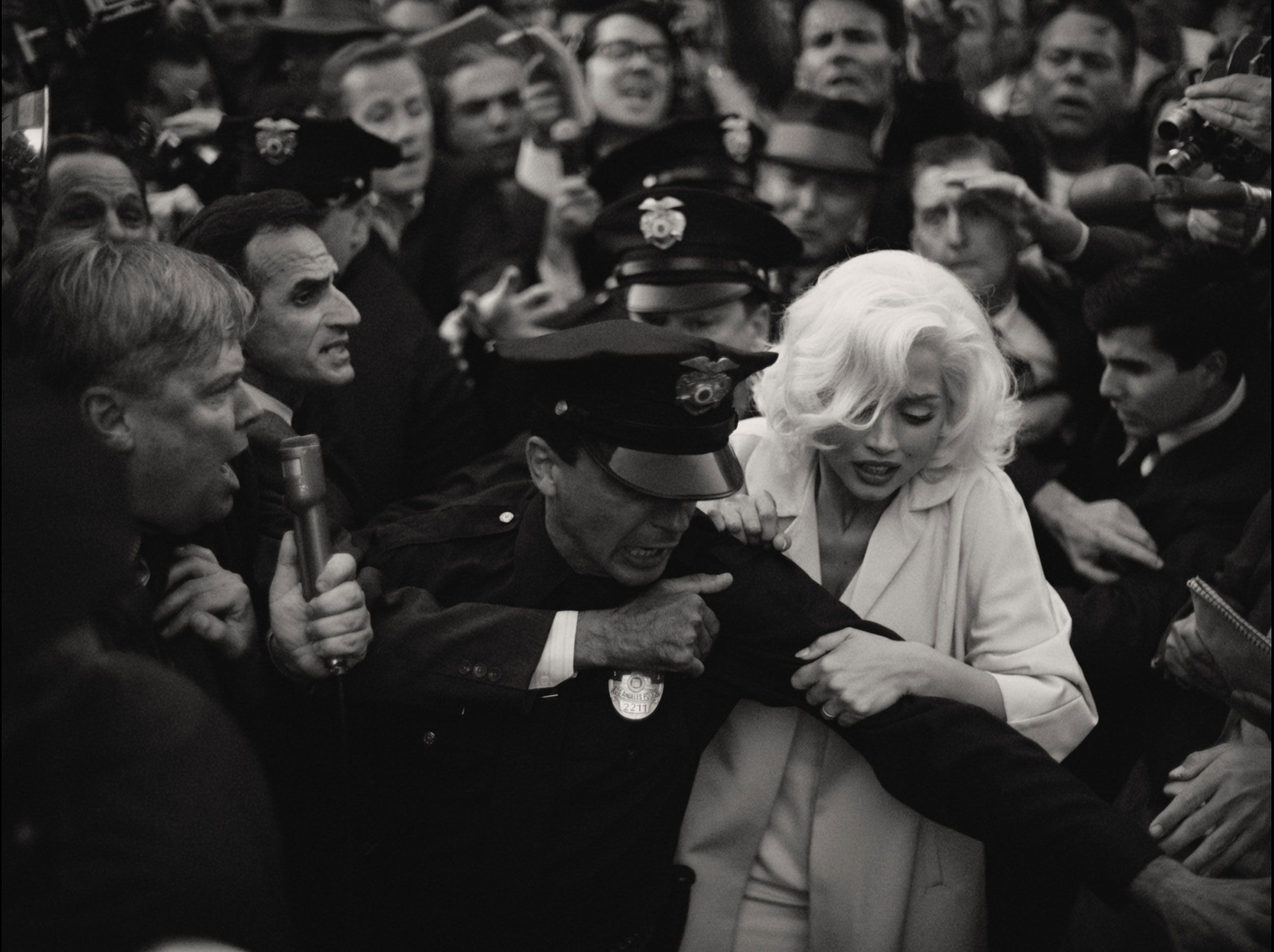
Blonde is a fictional telling of the life of screen legend and sex symbol Marilyn Monroe (Ana de Armas) based on the bestselling novel by Joyce Carol Oates. The film follows Monroe, born Norma Jeane, from her traumatic childhood through the genesis of her Hollywood stardom as she seeks to reconcile her tumultuous past with the demands of her Marilyn Monroe persona while attempting to achieve the idyllic family life she never had. The film has been much talked about leading up to its release, mostly for controversies and intrigue surrounding it, rather than its quality. When finally sitting down to watch, you quickly realize why that is.
Director Andrew Dominik has achieved something with this film that at first glance should seem impossible to pull off; crafting a film that is somehow simultaneously unsubtle and too esoteric. The lack of subtlety arises from the heavy handed, over the top depiction of the familial dysfunction that forms the core of how this fictional Marilyn Monroe forms adult relationships throughout her life, namely her lifelong desire to meet her father. His specter is one that hovers over the film during its entirety, mostly through a picture that young Marilyn is shown by her mother and hung on their wall while mother and daughter lived together. After her mother’s decline in mental health, resulting commitment to a mental hospital, and Marilyn’s subsequent life in an orphanage, this lack of parental bonds and unfulfilled connection to her father results in Marilyn dating toxic, controlling men and being led around in her professional life by advisors and managers who only seek to extract value from her sexpot persona with no regard for her personal well-being as Norma Jeane.
All would be well if this point were driven home as we watch Marilyn’s character arc unfolded within the story, but instead we are beaten over the head with it repeatedly as we listen to her call the numerous men that enter her life “daddy.” This is the most egregious example of the too plain cinematic language in which Blonde’s film is spoken, but certainly not the only. The audience is treated to numerous shots from the vantage point of the inside of Marilyn’s vagina as she obtains abortions, first through duress from a male advisor in her professional life and a second time following a tragic accident, signifying her repeated doomed attempts at establishing some sort of strong family ties in adulthood that evaded her as a child. Again, this point would have been better made within the flow of the script depicting her interpersonal relationships and experiences at attempting pregnancy, but over the top shock value was instead chosen as the method of driving home the point. It leads to the film feeling like an exercise in creating emotional trauma porn rather than a deep look at the lasting effects of childhood trauma and where the search to fill the hole inside oneself can lead if said trauma is unaddressed.
All of this film’s examples of unsubtle filmmaking speak to a larger issue of overindulgence from its director who crafted a film full of extreme imagery, gratuitous nudity, and faux artsy shots that switch between black and white and color for no real rhyme or reason. This is where the esoteric part of the film comes in as it at times feels like a series of collected scenes of Marilyn’s trauma jumping from one to the next without explanation of a carefully crafted narrative. Show, don’t tell can be useful but if too much is just left to visual storytelling, a feature film can feel like a vignette, which happens in Blonde in large chunks. Sometimes, weird or nonsensical choices can still result in something watchable, as we’ve seen from auteurs from David Lynch to Nick Winding Refn, but Dominik’s output here commits a cardinal sin that the works of those directors usually does not; it’s uninteresting too. Getting through its nearly three hour runtime, another sign of its self-indulgence, feels like a slog during the final 45 minutes.
Blonde comes across as a story that writer/director Andrew Dominik wanted to tell about another woman, but he needed the Marilyn Monroe branding in order to get the go ahead to produce the project. As I’ve recently written, sometimes artistic license may be taken in order to craft a compelling film, but when it veers this egregiously away from reality, the value and effect of taking such liberties comes into question. Going full esoteric art house is certainly a creative decision that can make dividends, as long as the result is also interesting. That is not accomplished here, which is a shame because Ana de Armas clearly worked hard to craft a good performance that would raise her stature and respect as an actress, but the material didn’t come close to matching what she worked on and delivered. She successfully transforms herself into the star from look all the way down to her voice, capturing Marilyn’s famous breathy speaking style, but it is all for naught. Ultimately, Blonde feels like an edgy, try hard film that wastes too much of our time and its star’s.
Image: Netflix

